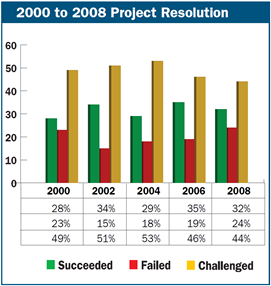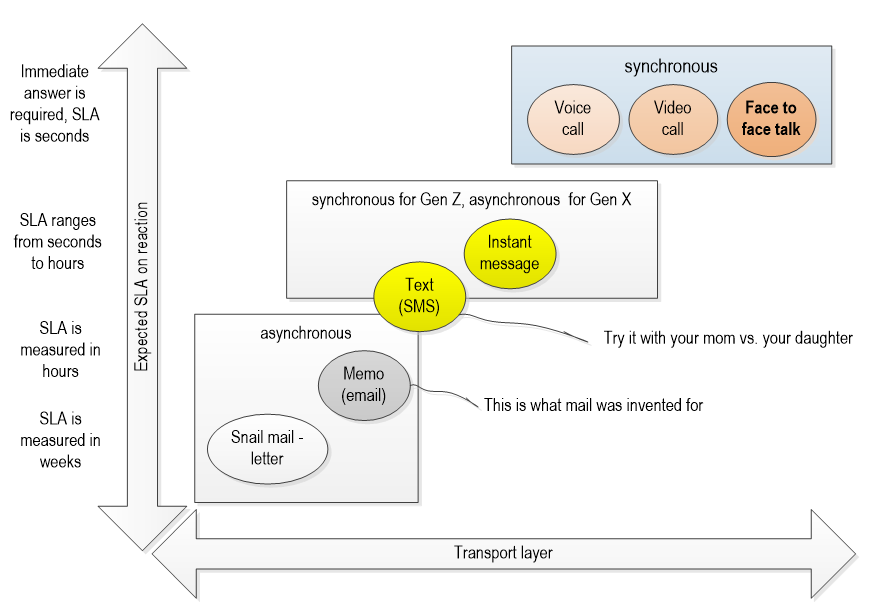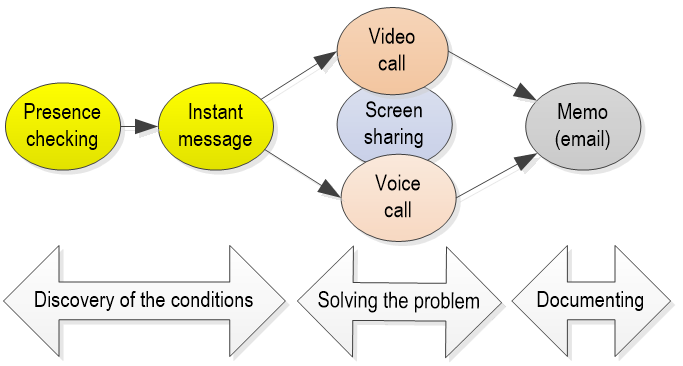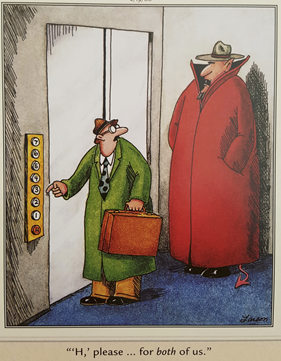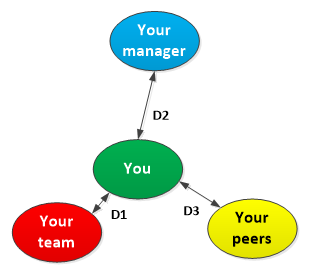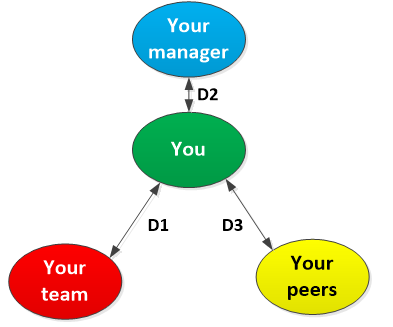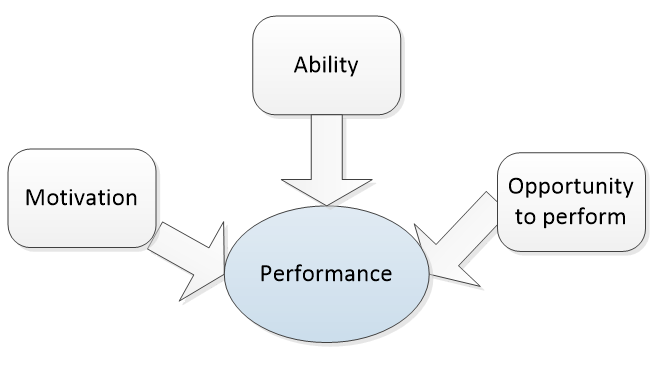A few weeks back I got a question from an intern about where IT was going and how she could find a good place in it. This was the 4th time in a row that I got this ultimate question about the meaning of life (of an IT guy). I could have cracked it by asking Deep Thought (my liquid cooled custom built PC), but I figured - since these folks do not have a few million years to wait for the answer - that I would summarize my guesswork in a blog post and then ask others what they think. So here we go.
If history is any guide (what I think I know)
IT comes in waves: in every 15-20 years comes a technology that questions the fundamentals of the previous age of computing. The PC, the graphical UI, the World Wide Web, the smartphone or cloud computing are examples of these tectonic moves. One is lucky if (s)he can exploit one of these, exceptionally lucky ones might capture two.
Commoditization - when a product or service becomes indistinguishable from similar products - has tarnished HW already and will render the OS irrelevant soon: margins become single digit and only a few survive this cutthroat race (Tallgrass, Compaq, Gateway, Everex to name a few now defunct PC manufactures). A prime example is IBM, the inventor of the personal computer who sold its PC business to Lenovo when realized it can no longer produce enough profit in this area.
Commoditization is the prelude for consolidation (this happened to CPU architectures: Zilog, PA-RISC, PowerPC, MIPS, SPARC, Itanium, SGI from the age of the CPU architecture wars, later to the operating systems: SCO, Banyan VINES, Novell Netware, Minix, BSD just to name a few from the OS graveyard, AIX and Solaris soon to join them.) Have you ever thought how many manufacturers produce airbags or watch calibres in quantities?
Scarcity of a resource dictates its price, ie. if your knowledge domain places you in the commodity bucket, you will become cheaper.
There is a correlation between the expected return and the volatility (risk) of this return – expressed in less chic way: your bonus will be less in a back-office function than in sales. One way to fight this is by picking a good niche for yourself.
Software rearranges the borders between realms – eg. voice and data is already merged and voice no longer belongs to the telco guys by birth right.
Combo skillsets win over single-track skills: “if all you have is a hammer, everything looks like a nail.” Technologists regularly make the mistake of attacking any problem with a technology solution. If you want to be successful, you need to keep in mind processes and people as well.
The half-life of any given technology is under 5 years, while your capability to absorb something new will decline as you get older: look for something with a longer life span if you are over 45. BTW: do not count on state pension (at least not in Hungary), you either have become rich by this time or you will (have to) work longer than your retirement age.
Real Men Don't Eat Quiche, right? Someone told me that IT certs are worthless, since he interviewed people with certs who knew less than him. While not all certs are equal, there are a few with serious respect. Once I offered a bet: “If you are so damned smart, why don’t you take all the 6 exams needed for an MCSD in a single week? If you do so, I throw in the exam fees for all.” My best folks did it, the rest stopped criticizing MCSD.
An IT screw up can be devastating – just ask the CEO of British Airways… As Pink Floyd once put it: Careful with that (outsourcing) axe Eugen!
What great minds think - two opinions from the opposite ends
On the one hand Nick Carr in his seminal article (“IT doesn’t matter”) drew the analogy between electricity and IT, pointing out that when electricity was not widely available, it was a source of competitive advantage, but later, when the output of power plants (via the national power grid) became widely accessible, reliable and cheap, it became a commodity no one could create competitive advantage on. Economies of scale and the higher utilization by serving multiple customers brought down the prices, rendering in house dynamos a burden, no longer an asset. He argued if every firm has access to the same (commodity) IT infrastructure, then none of them can gain an edge over the rest by using it, ie. it (IT) should be the focus of disciplined cost management. In hindsight Carr defined the public cloud in 2003.
Mary Meeker from Kleiner Perkins provides a treasure trove to those who care to read her 350+ slides every year. Slide 181 in her 2017 Internet Trends slide deck claims that the slice of the global IT infrastructure pie spent on traditional data centre spend shrunk from 76% to 63% in 4 years (2013 - 2016). So it seems Carr was right.
On the other hand, Marc Andreessen (one of the founders of Netscape) claims that software is about to eat the World as we know it. Perhaps Tom Friedman captured this phenomenon best when he wrote, “In 2004, Facebook didn’t exist, 4G was a parking space, an app was something you sent off to college, LinkedIn was a prison, Tweet was a sound a bird made, and Skype was a typo.” Things changed. Andreessen (and others) bring up amazing examples where IT reshaped entire industries (in less euphemistic terms: wiped out once invincible incumbents) in the last 15 years: LinkedIn – recruitment, Skype – telecom, Pixar – animated movies, Netflix – home movies, Spotify – music, Airbnb - hotels, Amazon – retail, Google – marketing, PayPal – payments, Kindle – books, AWS – computing power.
Mary Meeker in her Internet Trends 2012 dedicated an entire section of her presentation to “RE-IMAGINATION OF NEARLY EVERYTHING” (from slide 20 to slide 57). Her assessment is in sync with Andreessen, something unprecedented is about to happen, mostly driven by IT. So it seems Andreessen is right, therefore Carr must be wrong, or what?
How can we bridge the chasm between these two statements?
William Forrest from McKinsey resolved this contradiction by splitting IT into two areas:
Old IT – increases the efficiency of individuals while leaves the processes and workflows largely intact. With the term coined by Clayton Christensen, old IT brings sustaining innovation.
New IT - focuses on new (digital) products or services, on team productivity and business model transformation. New IT focuses on disruptive innovation.
My reading is that IT matters more than ever and will transform entire industries, rather than (just) make existing business models more efficient as its primary goal. On the other hand, IT infrastructure (especially for small/mid-sized companies, or anybody without a multi decade investment in on-premises IT will gravitate towards public cloud offerings for the agility and the ability to scale up (or down) as the business demands. I believe this is not about the cost.
Where I would place my bet
Security could change the course of WWII (Alan Turing vs. the Enigma), can delay a major Middle East power’s quest to own an atomic bomb (Stuxnet), can give a blow to the Healthcare System of a country (WannaCry) or can cost the job of a senior executive eg. at Sony Pictures. Major companies, (and nation states) will pay serious money to protect (or to get) information. A never-ending story. FYI: you need to be good at it to score.
Integrating on-premise DCs with public cloud providers –Let’s put Carr’s analogy one step further (details in the appendix) Based upon this cca. 16% of computing will remain on premises for the next 20 years due to regulatory, security and (sunken) cost reasons. Lovely: one will have to connect the on-premise IT with the part provided by public cloud providers. Complex, relevant, cool, what else would you ask for?
Containerization (and microservices) – provisioning an on-premise physical server can take up to 3 months (from the request), you can spin up a VM in 10 minutes, while you can start up a container in seconds. But wait, there is a problem: your provisioning, access control, monitoring etc. is incompatible! An opportunity to integrate it with the existing environment. I put microservices in here: I believe that most of your existing stuff will not run on it either, so you will need to rewrite the whole thing to mostly stateless (except the DB layer). Chances are it means a total overhaul, not just small modifications.
Machine learning: imagine that the scenario in WestWorld became true. Imagine that a robot (essentially a computer with a human like body and peripheries) could modify its code based upon its experiences. A bit frightening, but certainly cool.
UX design – Gen Y End users will demand Consumer-Quality product experiences. This means that old school mantra (“it does not matter how ugly my stuff is as long as it does the job”) will no longer cut it. The designer to developer ratio is on the rise. (KP Internet trends 2017 – slide 188) Cool, beautiful, one who can design AND write the business logic will be king.
Augmented and virtual reality – 5 years ago we created an app that combined 3D Bing Maps with Kinect and a PC (no XBOX) and let people fly over the Grand Canyon just like a bird. I don’t quite know how one can monetize it, but it was so cool that I would do it again, any time.
Healthcare diagnostics – the population of the US (and of Europe) is aging while governments struggle to contain healthcare costs. IBM’s Watson AI Recommends Same Treatment as Doctors in 99% of cancer cases. Wearable gizmos transmitting vital signs with computing capacity in the backend can make the difference between life and death. Absolutely key for us mortal dudes, therefore a good business.
The Internet of Things – imagine that a large number of vacuum cleaners would combine their computing power to work on the SETI problem Or imagine that you could monitor the status of a car (eg. the oil level, or tyre pressure), perhaps your mother’s car who often forgets about these things. The bandwidth, security, privacy related will remain unsolved areas for years. An opportunity for you.
I gathered a few ideas, now it’s your turn to let me know what missed or got wrong. I will be happy to share your feedback with the people who raised the original question. Best regards Laszlo
References:
IT Doesn’t Matter by Nick Carr
Nick Carr's 'IT Doesn't Matter' still matters by Ann Bednarz
The end of corporate computing by Nick Carr
Why Software Is Eating the World by Marc Andreessen
A McKinsey View On Whether Information Technology Matters by Joe Weinman
Disruptive technologies: Advances that will transform life, business, and the global economy - a report by McKinsey
Cloud as IT Disrupter; SDN as a New Virtual Network Infrastructure
Big data: The next frontier for innovation, competition, and productivity
Internet Trends 2012 (Mary Meeker) Section: RE-IMAGINATION OF NEARLY EVERYTHING (from slide 20 to slide 57)
Internet Trends 2017 - (Mary Meeker)
IT Doesn't Matter: What every IT pro needs to know to survive in the cloud era By Art Fewell
Gartner Reveals Top Predictions for IT Organizations and Users for 2012 and Beyond
Joseph Schumpeter: Creative Destruction
Don’t Get SMACked: How Social, Mobile, Analytics and Cloud Technologies are Reshaping the Enterprise By Malcolm Frank
Are You Ready for the Second Wave of the Digital Revolution?
The Unintended Consequences of Outsourcing
15 Top-Paying Certifications for 2017by Global Knowledge
The 9 worst cyberattacks of 2015 on Business Insider
Electricity in the United States
What is U.S. electricity generation by energy source? US. EIA. What portion of electrical energy produced in the US is generated by private companies for themselves? I speculate that private generators run on either natural gas or on diesel oil since nuclear, coal or water generate larger capacities but require deeper pockets, while a natural gas-powered plant can be small. Petroleum powered plants are under 1 %, coal and nuclear are around 50%, renewable around 15%, I figure that one half of the natural gas based power comes from private companies. That is 16%.
THE TEN COMMANDMENTS OF MICROSERVICES by Janakiram MSV
IBM’s Watson AI Recommends Same Treatment as Doctors in 99% of Cancer Cases







